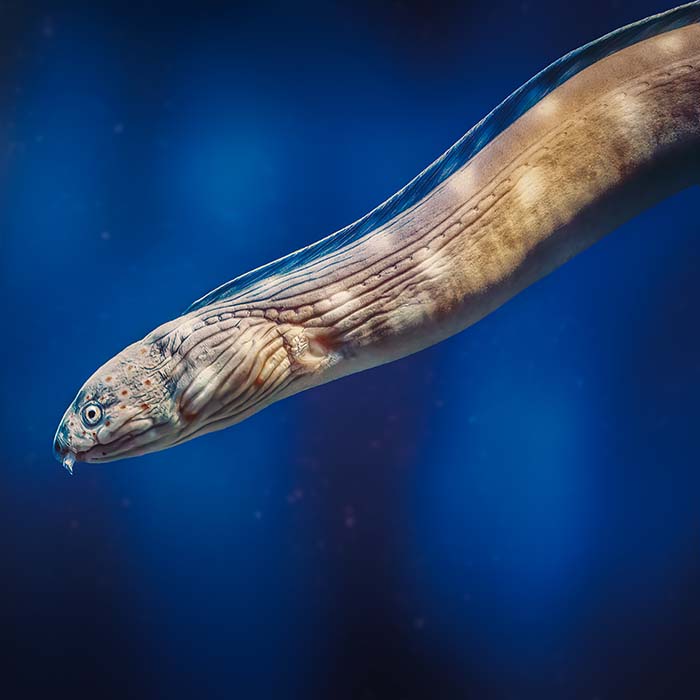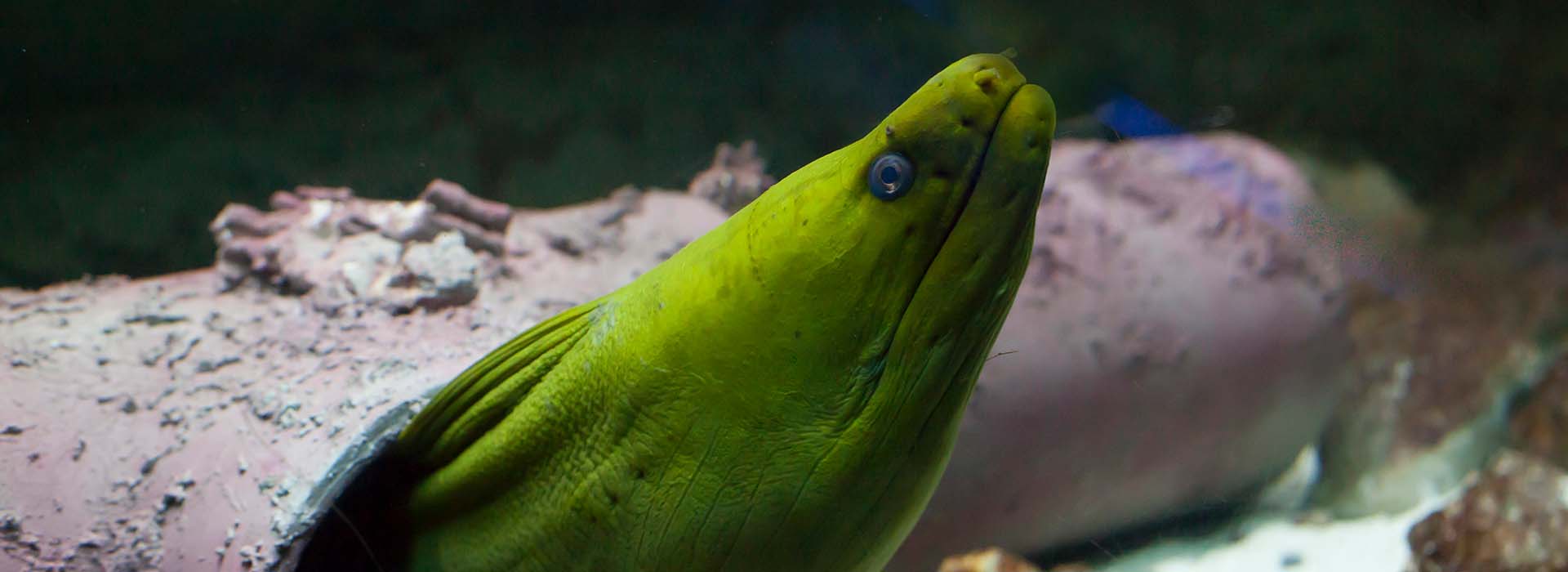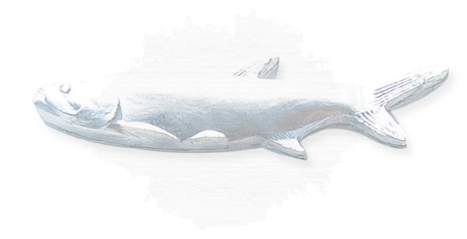There are three types of eels you will find in the Florida Keys:
Moray: green, spotted, golden tail, chain, chestnut, mulatto, purple mouth.
Snake: sharptail, gold spotted.
Garden: brown.
Moray Eels
Morays vary considerably in size, skin diversity and color. Their skin can be colored in various hues, such as brown, green, yellow, black and blue. Despite their variations, it is easy to tell when you are looking at a moray eel due to their characteristics.
Moray eels have a long dorsal fin that runs almost their entire body length. Their head is large with small eyes located forward, and they have wide mouths with oversized teeth for tearing flesh. They have a secondary set of toothed jaws in their throat called pharyngeal jaws, which allow them to grab and pull their prey through their digestive tract.
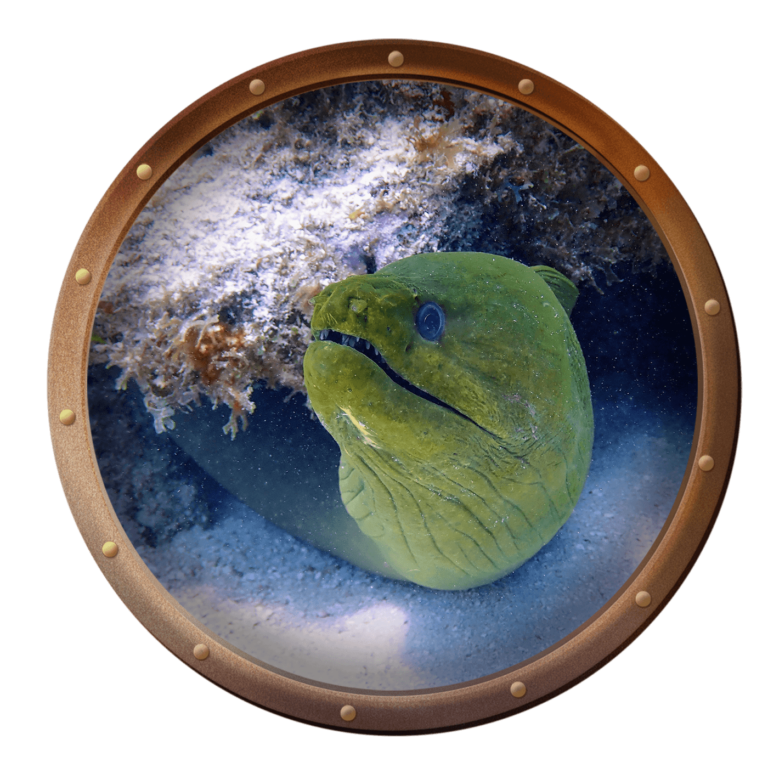
Moray eels also secrete mucus over their smooth skin, which allows them to swim quickly around the reef without abrasion.
Have you ever wondered why moray eels continuously open and close their mouths? It makes you wonder if they’re hungry, right? Due to having small gills, morays need to actively facilitate respiration and maintain water flow by moving their mouth in a gaping motion. Unfortunately, many people mistake this as aggressive posturing, and it’s part of the reason why moray eels have a fearsome reputation. Morays also have poor eyesight, so it’s hard to distinguish where food ends and human fingers begin. Aside from attacking when under threat, moray eels have a history of biting off and swallowing the digits of those feeding them. Oops!
Scientific studies have shown hermaphroditism in morays, some being sequential (born male, later becoming female) and others being synchronous (having both functional testes and ovaries simultaneously), and they can reproduce with either sex.
Mating begins when water temperatures are at their highest. The morays wrap each other’s bodies together, either as a male-female couple or as two males and a female, and concurrently release sperm and eggs for fertilization.
When hatching, the eggs become leptocephalus larvae, which appear as thin leaf-shaped beings. They float in the open ocean for around eight months, then swim down as elvers to begin life on the reef. They live between six and 36 years. Their main predators are large groupers, barracudas and people.
Snake Eels
Snake eels represent more than 200 species found worldwide, mostly in tropical or temperate waters. These snake-like creatures are more gentle than their aggressive relatives, the morays. A distinguishing feature of a snake eel is its pointed and sharp tail. The snake eel uses its tail to burrow backward into the sea bottom, creating a protective burrow. The spotted snake eel of the southern Atlantic and Caribbean attains a length of 4 feet.
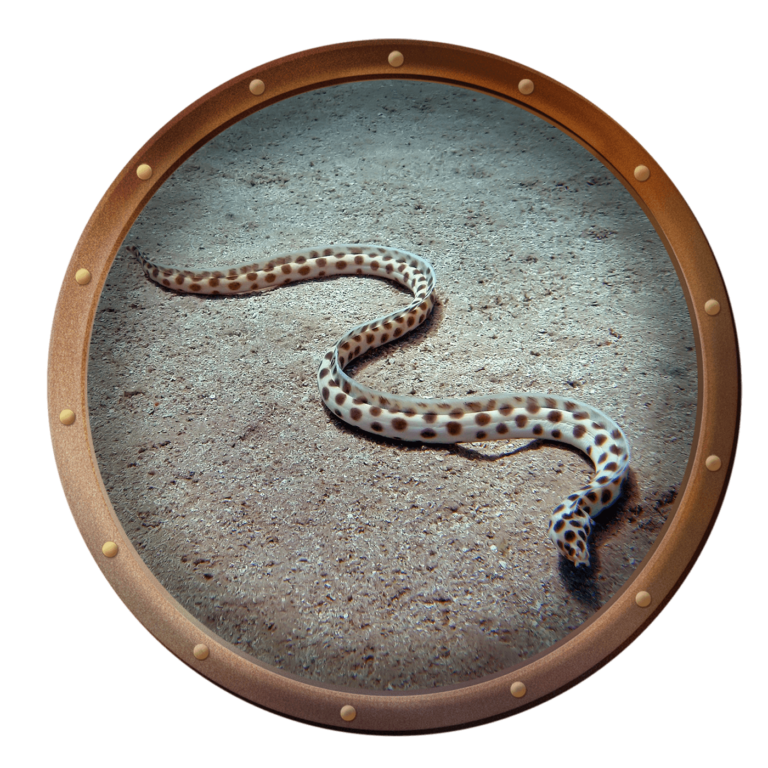
Garden Eels
If you didn’t know any better, from far away, you might mistake a colony of garden eels for a field of swaying seagrass. Hundreds to thousands of garden eels living together in a colony is common. Garden eels can grow to be 16 inches long, though you may never see more than a quarter of their body.
A garden eel drives its pointy tail into the sandy seafloor by tightening its body and making itself rigid. Once the eel is deep enough, it will wiggle its dorsal fin and push sand out of the hole. The slime from their skin causes the walls of their burrows to cement, preventing cave-ins. Like many other reef animals, garden eels escape predators by diving into their reef-bottom burrows.
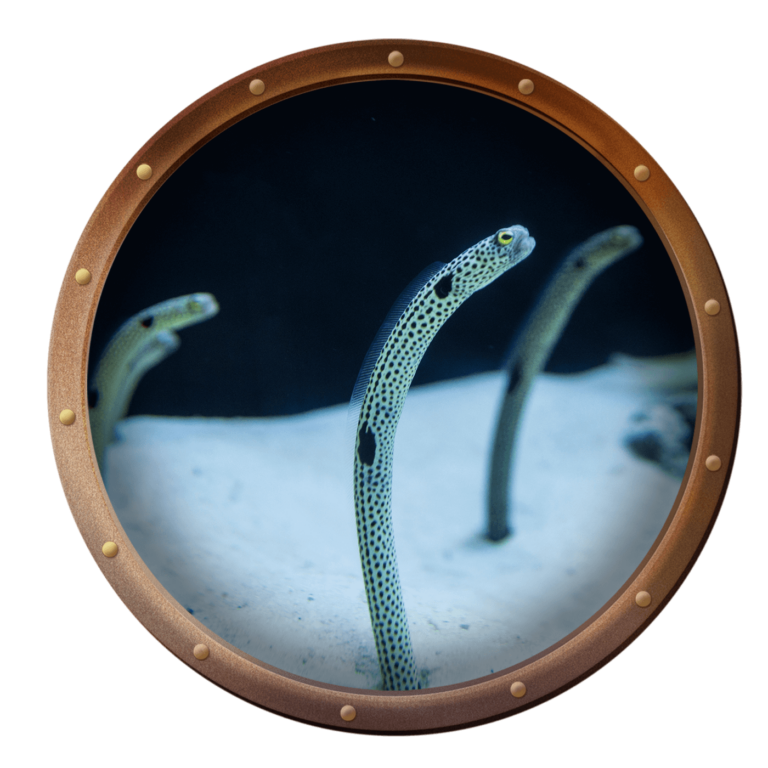
Garden eels are sexually dimorphic — the males and females look very different. The males are larger than the females, and the male’s jaw sticks out further than the female’s.
During mating season, the males and females move their burrows closer together.
After mating, garden eels release their fertilized eggs into the current. The eggs float near the surface of the ocean. The eggs will hatch, and the larvae will float along until they are large enough. Then, the juvenile garden eels swim down and make their burrows.
